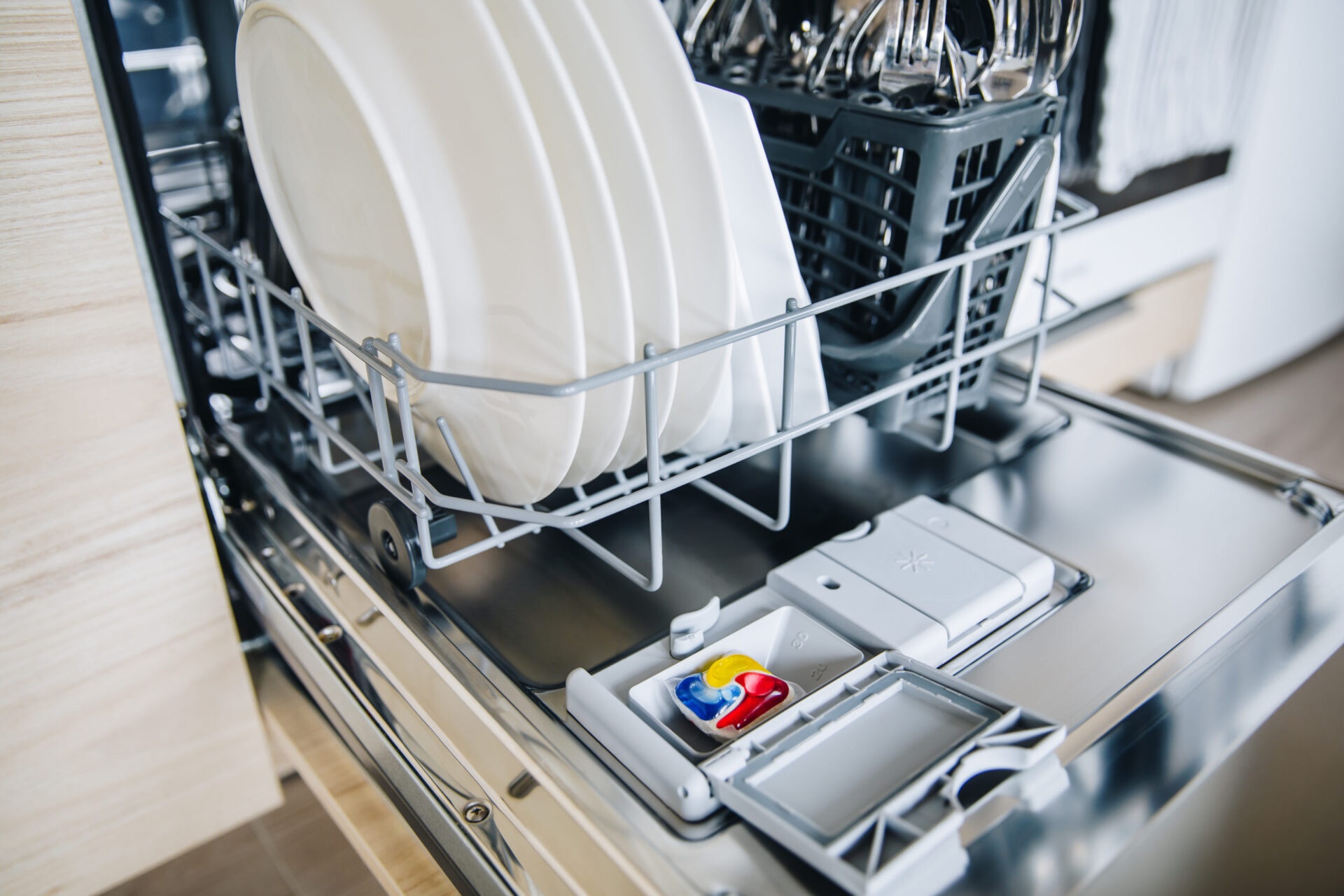Let’s all take a moment to appreciate the modern marvel that is the dishwasher! Gone are the days of standing at the sink scrubbing plates and bowls endlessly, while our fingers pruned and our appetite worsened. We can now snack in peace, knowing that all we have to do is load up our dishwasher, add detergent, and press start, and we will have clean dishes in an hour.
But what happens when our dishwashers fail us? Standing water is a common sign of failure, but don’t panic! Take these steps instead.
No. 1: Examine It
Some blockages are simply caused by food or napkins getting caught in the drain. Examine your dishwasher’s food trap and drainage systems and remove any large pieces of food or trash that may have been discarded into the dishwasher. If that’s the cause of your standing water, you will likely see a quick drain!
Water can also be left standing in your dishwasher because of improper loading or the machine was simply stopped mid-cycle. Rule all out all of these possibilities before moving on to step two!
No. 2: Remove the standing water.
Regardless of how it happened, standing water can damage your dishwasher and dishes. If left too long, the water can grow harmful bacteria and pieces of your dishwasher can become water-logged or damaged. Prevent this, by cleaning up the mess.
Start by unloading your dishes. If these are not fully cleaned, roll up your sleeves and scrub the dishes clean to avoid dangerous bacterial growth. Then, begin scooping water out from the dishwasher with a bowl or cup. If the water becomes too shallow to scoop, soak it up with a towel. You can also use devices designed to suck up standing water. Finally, leave the dishwasher open and let it dry completely before you continue onto step three. (Set up a fan for a speedier dry time!)
No. 3: Clean it!
You may not be able to see all of the gunk that has accumulated on the inside of your dishwasher’s surface at first glance, but a good cleaning can eliminate potential culprits of standing water. You can use traditional cleaning sprays to wipe down your dishwasher, but we recommend running the dishwasher on a hot temperature with solvents created to clean your dishwasher. If you prefer a DIY method, sprinkle baking soda on the bottom of the dishwasher and place a mug or bowl with white vinegar in it on the top rack. The baking soda will scrub your bottom elements, while the vinegar tackles the grime.
No. 4: Do one last thorough examination
After you’ve cleaned your dishwasher, you may reveal the core of the issue. Sometimes this is an easy fix, like replacing a filter or a simple matter of needing to clean the dishwasher more frequently.
Other times, cleaning your dishwasher reveals an issue that’s too large for you to tackle or that your previous attempts did nothing to prevent the issue of standing water. Then, it’s time for step five.
No. 5: Call the pros!
Don’t attempt to dig any further into the issue that’s causing your dishwater to collect water rather than drain it. Unless you’re an expert, you could cause more costly damage to your dishwasher. Instead, trust a plumbing professional. They can examine your machine and your pipes to pinpoint the issues or specialty needs of your dishwasher. This diagnosis will allow you to make the best decision for repairs and limit the amount of time you spend on a dishwasher hiatus.
If you’re ready for step number 5, then we’re ready to answer the call. Don’t hesitate to call our team at Master Rooter today and get your dishwasher back just in time for snacks.

